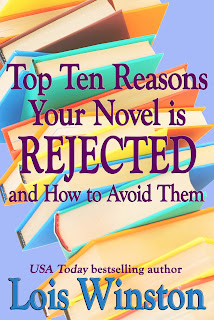Award-winning
author Vinnie Hansen fled the South Dakota prairie for the California coast the
day after graduating high school. Her eventual home in Santa Cruz serves as the
backdrop for most of her Carol Sabala mystery series. She also loves to write
short stories. Learn more about her and her and her mysteries at her website.
When my mystery series
starts with Murder, Honey, my protagonist
Carol Sabala is a baker who fantasizes about becoming a private investigator. I
didn’t set out to write a “foodie” mystery. At the time, the sub-genre didn’t exist.
Rather I made my heroine a baker so she would be something other than the
English teacher I was. I didn’t want readers to envision Carol Sabala as me.
Little did I know back then that everyone who knows me would picture Carol as
me even if I made her a green Martian.
Writers are admonished to
write about what they know, or to know about what they write. My husband at the
time was a baker/sous chef at a fancy restaurant here in Santa Cruz, the model
for Archibald’s in Murder, Honey. I
was able to pick his brains for the inner workings of a restaurant and baking
tips.
My choices became problematic
when my husband and I divorced. Good thing I gave Carol Sabala the dream of
becoming a private investigator. One arc of the series is her transformation into
a detective. However, to make ends meet, Carol continues to work at
Archibald’s. Many of the mysteries flit back into the restaurant, and all of
them contain a recipe related to the theme of the book.
Since Death with Dessert, the fifth book in the series, takes Carol to
Mexico, I wanted a Mexican recipe for the book.
If you’ve traveled to
Mexico, you’ve probably noticed the absence of abundant desserts. Mexican
culture does not emphasize baked goods like pies and cakes, possibly because of
the tropical heat or because wheat is not the commonly used grain. Many of the
desserts that do exist are made on the stovetop rather than baked. Even the
classic flan was traditionally cooked on the stovetop.
My own “flan” is nothing
more than the custard from Betty Crocker. For Death with Dessert, I wanted
a recipe for a traditional Mexican flan, the type the Mexican-American parents
of my students made, a heftier and more substantial dessert. Put it this way,
the flan I consider “real” Mexican flan can be cut and served like a cake.
So I hounded a worker at
“my” school for her recipe. She was enthusiastic about helping but took a long
time. She finally forked over a scrap of paper with a list and basic
directions. I realized that she made her flan by heart. Rather than pester her
for specifics, I experimented, using the most common sizes for the “cream
cheese,” “condensed milk,” and “evaporated milk.” From the delicious results, my
calculations must have been correct. Here’s what I came up with:
Sylvia’s Flan
8 oz. cream cheese at room
temperature
5 eggs
8 oz. can of sweetened
condensed milk
12 oz. can of evaporated
milk
1 tsp. of vanilla (I use
more!)
2 cups of sugar to make
syrup (Or less. See directions.)
Heat oven to 350 degrees F.
Blend all of the ingredients except the sugar. (In spite of a ton of whisking
on my part, the mixture was never 100% smooth.)
Prepare the syrup by melting
the sugar slowly in a saucepan over low heat, stirring constantly. (In my
opinion, this creates more syrup than necessary. One could halve the amount.)
Once the sugar has melted, pour the resulting syrup into an 8-inch square pan.
Let the syrup harden for 10 minutes.
Pour the mixture of the
other ingredients over the syrup. Place the 8-inch pan in a larger pan. Fill the
larger pan with hot water to within a half inch from the smaller pan’s top.
Bake for about an hour. To test the doneness of the flan, insert a knife into
its center. The blade should pull out clean.
Chill. Unmold at serving
time by inverting the pan.
Death with Dessert
A dead mother. A missing father. A mysterious man.
They all spell trouble for
private investigator Carol Sabala. When Carol’s mother dies unexpectedly, Carol
is left with no family—only money, grief, and an envelope. Her mother has
charged her with a mission: deliver the envelope to her long-lost father. En route
to Zihuatanejo, Mexico to track down her father Carol encounters the alluring
Mark Escalante, who snares her in a deadly pursuit of his own.
Buy Links
Want to win a free copy? Vinnie is offering five copies of Death with Dessert through Goodreads. Click here for details.


























